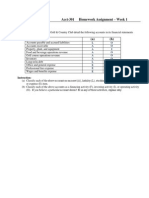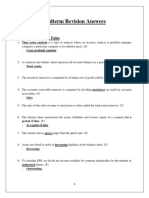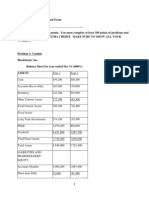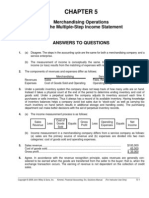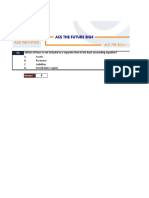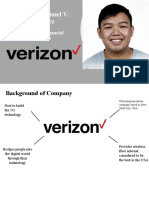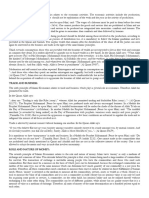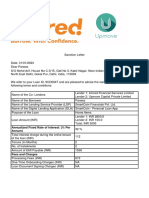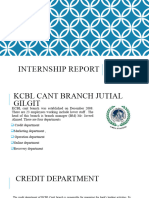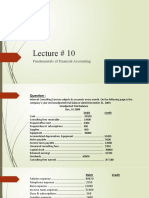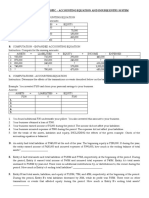0% found this document useful (0 votes)
261 views5 pages6th Edition Module 2 Selected Homework Answers
The document contains sample homework answers summarizing financial statements for several companies. Barth Company's 2019 income statement shows $500,000 in sales revenue and $274,000 in net income. Its balance sheet lists total assets of $526,000 equal to total liabilities and equity. Baiman Corporation's January income statement shows $40,000 in sales and $28,000 in net income, while its balance sheet balances at $40,000 with assets equal to liabilities and equity. Financial ratios show ANF has higher expenses and lower profits than TJX, and ANF carries less inventory due to its higher-end retail model.
Uploaded by
joshCopyright
© © All Rights Reserved
We take content rights seriously. If you suspect this is your content, claim it here.
Available Formats
Download as DOCX, PDF, TXT or read online on Scribd
0% found this document useful (0 votes)
261 views5 pages6th Edition Module 2 Selected Homework Answers
The document contains sample homework answers summarizing financial statements for several companies. Barth Company's 2019 income statement shows $500,000 in sales revenue and $274,000 in net income. Its balance sheet lists total assets of $526,000 equal to total liabilities and equity. Baiman Corporation's January income statement shows $40,000 in sales and $28,000 in net income, while its balance sheet balances at $40,000 with assets equal to liabilities and equity. Financial ratios show ANF has higher expenses and lower profits than TJX, and ANF carries less inventory due to its higher-end retail model.
Uploaded by
joshCopyright
© © All Rights Reserved
We take content rights seriously. If you suspect this is your content, claim it here.
Available Formats
Download as DOCX, PDF, TXT or read online on Scribd
/ 5





